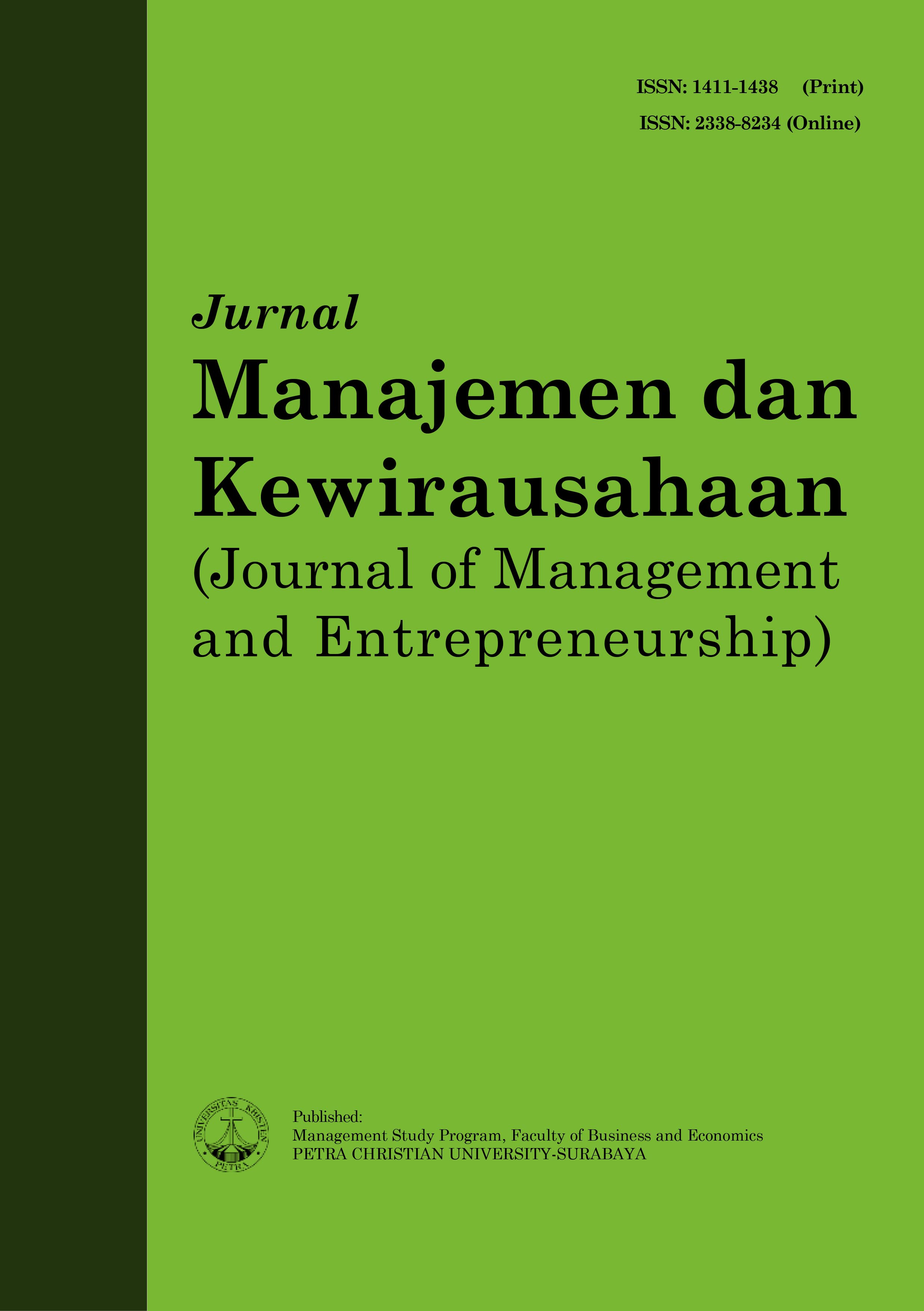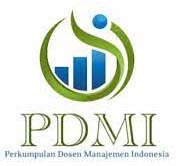BOND AS A SAFE HAVEN DURING MARKET CRASH: EXAMINATION OF COVID-19 PANDEMIC IN ASEAN-5
DOI:
https://doi.org/10.9744/jmk.23.1.1-9Abstract
The central aim of this paper is to examine the effectiveness of corporate bonds and government bonds against the stock price fluctuation in ASEAN-5 countries (Indonesia, Malaysia, Philippines, Thailand and Singapore). Highlighting an important event of COVID-19, we investigate whether bonds provide protection by utilizing Q-REG method. The noteworthy finding is that bonds consistently act as a hedge for Malaysia and Philippines, while regarded as a diversifier for Indonesia’s capital market. However, this study observed that corporate bonds successfully become a strong safe haven for Thailand and Singapore capital market. Similar result was also found for Singapore government bonds which provides a valuable return during the pandemic of COVID-19.
References
Baele, L., Bekaert, G., & Koen, I. (2009). The determinants of stock and bond comovements. NBER Working Paper No. 15260. doi.org/10.1017/CBO9781107415324.004
Baur, D. G., & Lucey, B. M. (2010). Is gold a hedge or a safe haven? An analysis of stocks, bonds and gold. Financial Review, 45(2), 217–229. https://doi.org/10.1111/j.1540-6288.2010.00244.x
Baur, D., & Schulze, N. (2005). Coexceedances in financial markets - A quantile regression analysis of contagion. Emerging Markets Review, 6(1), 21–43. https://doi.org/10.1016/j.ememar.2004.10.001
Beber, A., & Brandt, M. W. (2006). Resolving macroeconomic uncertainty in stock and bond markets. SSRN Electronic Journal. https://doi.org/10.2139/ssrn.890379
Bianconi, M., Yoshino, J. A., & Machado de Sousa, M. O. (2013). BRIC and the U.S. financial crisis: An empirical investigation of stock and bond markets. Emerging Markets Review, 14(1), 76–109. https://doi.org/10.1016/j.ememar.2012.11.002
Bouoiyour, J., Selmi, R., & Wohar, M. E. (2018). Measuring the response of gold prices to uncertainty: An analysis beyond the mean. Economic Modelling, 75(January), 105–116. https://doi.org/10.1016/j.econmod.2018.06.010
Burniske, C. (Ark I., & White, A. (Coinbase). (2016). Bitcoin: ringing the bell for a new asset class. White Paper.
Cappiello, L., Engle, R. F., & Sheppard, K. (2006). Asymmetric dynamics in the correlations of global equity and bond returns. Journal of Financial Econometrics, 4(4), 537–572. https://doi.org/10.1093/jjfinec/nbl005
Cheng-Chwee, K. (2008). The essence of hedging: Malaysia and Singapore´ s response to a rising China. Contemporary Southeast Asia, 30(2), 159–185. https://doi.org/10.1355/cs30-2a
Chiang, S.-M., Lin, C.-T., & Huang, C.-M. (2013). The relationships among stocks, bonds and gold : Safe haven, hedge or neither? International Conference on Technology Innovation and Industrial Management, 29–31. https://pdfs.semanticscholar.org/eee2/d422f5cb7002a4f0bbe8d802f3d9cc6fa9d0.pdf?_ga=2.172194787.1155183825.1589891656-54053930.1588711801
Ciner, C., Gurdgiev, C., & Lucey, B. M. (2013). Hedges and safe havens: An examination of stocks, bonds, gold, oil and exchange rates. International Review of Financial Analysis, 29, 202–211. https://doi.org/10.1016/j.irfa.2012.12.001
Connolly, R., Stivers, C., & Sun, L. (2005). Stock market uncertainty and the stock-bond return relation. Journal of Financial and Quantitative Analysis, 40(1), 161–194. https://doi.org/10.1017/s0022109000001782
Flavin, T. J., Morley, C. E., & Panopoulou, E. (2014). Identifying safe haven assets for equity investors through an analysis of the stability of shock transmission. Journal of International Financial Markets, Institutions and Money, 33, 137–154. https://doi.org/10.1016/j.intfin.2014.08.001
Giles, C., Greeley, B., & Arnold, M. (2020). Global recession already here, say top economists. Financial Times. https://www.ft.com/content/be732afe-6526-11ea-a6cd-df28cc3c6a68
Greer, R. J. (1997). What is an asset class, anyway? The Journal of Portfolio Management, 2, 86–91. doi: 10.3905/jpm.23.2.86.
Hou, A. J., Khrashchevskyi, I., & Peltomäki, J. (2019). Hedge and safe haven investing with investment styles. Journal of Asset Management, 20(5), 351–364. https://doi.org/10.1057/s41260-019-00127-3
Hussain Shahzad, S. J., Raza, N., Shahbaz, M., & Ali, A. (2017). Dependence of stock markets with gold and bonds under bullish and bearish market states. Resources Policy, 52(March), 308–319. https://doi.org/10.1016/j.resourpol.2017.04.006
Jammazi, R., Tiwari, A. K., Ferrer, R., & Moya, P. (2015). Time-varying dependence between stock and government bond returns: International evidence with dynamic copulas. North American Journal of Economics and Finance, 33, 74–93. https://doi.org/10.1016/j.najef.2015.03.005
Kang, D. C. (2004). The theoretical roots of hierarchy in international relations. Australian Journal of International Affairs, 58(3), 337–352. https://doi.org/10.1080/1035771042000260110
Koenker, R., & Bassett, G. (1978). Regression Quantiles. Econometrica, 46(1), 33–50. https://doi.org/10.1017/CBO9781107415324.004
Krishnamurthy, A., & Vissing-Jorgensen, A. (2012). The aggregate demand for treasury debt. Journal of Political Economy, 120(2), 233–267. https://doi.org/https://doi.org/10.1086/666526
Krondahl, E., & Lindahl, O. (2012). Perceptual safe havens – A study of gold, oil, palladium, wheat, bonds, USD, and stocks. http://lup.lub.lu.se/luur/download?func=downloadFile&recordOId=2541147&fileOId=2541165
Lim, D. J., & Cooper, Z. (2015). Reassessing hedging: The logic of alignment in east Asia. Security Studies, 24(4), 696–727. https://doi.org/10.1080/09636412.2015.1103130
Liu, W. han. (2018). Are gold and government bond safe-haven assets? An extremal quantile regression analysis. International Review of Finance. https://doi.org/10.1111/irfi.12232
Mackay, D. B., & Bliemel, F. (2014). Theil’s Forecast Accuracy Coefficient : A Clarification. Journal of Marketing Research, 10(4), 444–446. https://pdfs.semanticscholar.org/cc66/033ed3047c1b3d5eb47d85ec52789b36324d.pdf
Miyazaki, T. (2019). Clarifying the response of gold return to financial indicators: An empirical comparative analysis using ordinary least squares, robust and quantile regressions. Journal of Risk and Financial Management, 12(1), 33. https://doi.org/10.3390/jrfm12010033
Moghbelli, H. (2020). Hedging as a business risk protection instrument. 28(2), 551–565. https://doi.org/https://doi.org/10.1080/13574809.2015.1092378
Rahim, M. A. A., Zahari, S. M., & Shariff, S. S. R. (2016). Impact of univariate error distribution assumption toward multivariate GARCH parameter estimation performance. International Journal of Advances in Soft Computing and Its Applications, 8(1), 1–11.
Robiyanto, R. (2018a). Capital market integration in some ASEAN countries revisited. Jurnal Manajemen, 22(2), 205. https://doi.org/10.24912/jm.v22i2.359
Robiyanto, R. (2018b). Gold VS bonds: What is the safe haven for the Indonesian and Malaysian capital market? Gadjah Mada International Journal of Business, 20(3), 277–302. https://doi.org/10.22146/gamaijb.27775
Robiyanto, Wahyudi, S., & Pangestuti, I. R. D. (2017). Testing commodities as safe haven and hedging instrument on ASEAN’s five stock markets. Jurnal Ekonomi Kuantitatif Terapan, 10, 231–238.
Downloads
Published
How to Cite
Issue
Section
License
Authors who publish on this journal agree to the following terms:
- Authors retain copyright and grant the journal right of first publication with the work simultaneously licensed under a Creative Commons Attribution License that allows others to share the work with an acknowledgement of the work's authorship and initial publication in this journal.
- Authors are able to enter into separate, additional contractual arrangements for the non-exclusive distribution of the journal's published version of the work (e.g., post it to an institutional repository or publish it in a book), with an acknowledgement of its initial publication in this journal.
- Authors are permitted and encouraged to post their work online (e.g., in institutional repositories or on their website) prior to and during the submission process, as it can lead to productive exchanges, as well as earlier and greater citation of published work (See The Effect of Open Access).


















